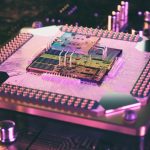Researchers have put computational fluid dynamics software to good use in devising a solution to the age-old problem of the perfect soft-boiled egg.
While Brits love to dunk their soldiers (toast cut into strips) in a soft-boiled egg, other nations seem more equivocal about its taste. Nonetheless, ensuring that the white is set while the yolk remains runny can be a tricky business. Pedants adhere to carefully timed boiling, but adjusting for the size of the egg can be tricky.
Research led by Ernesto Di Maio, materials engineering associate professor at Italy’s University of Naples Federico II, has developed a method involving periodic heating based on carefully calculated fluid dynamics.
The crux of the challenge in getting it right lies in the fact that the white, or albumen, cooks at a higher temperature (85°C) than the yolk (65°C). Boiling a shelled egg at 100°C risks fully setting the yolk, while the vogue method of using a water bath at between 60 and 70°C – which chefs call sous vide – risks leaving the white undercooked and gloopy.
Using computational fluid dynamics software, Di Maio and the team simulated a method that alternates cooking between water at 100°C and a bowl at 30°C. The researchers propose moving the egg from one to the other every two minutes for a total duration of 32 minutes.
Asteroid as wide as 886 cans of spam may hit Earth in 2032
A good kind of disorder: Boffins boost capacitor tech by disturbing dipoles
Boffins ponder paltry brain data rate of 10 bits per second
British boffins build diamond battery capable of working for a millennium or five
“A fine solution of the problem is then found through simulation with a Computational Fluid Dynamics (CFD) software, where imposition of different boundary conditions allows us to compare the evolution of the temperatures and the cooking degrees inside the egg obtained with different cooking methods,” the paper published today in Nature’s Communications Engineering said.
“Comparison with established egg cooking procedures through a plethora of characterization techniques, including Sensory Analysis, Texture Profile Analysis, and FT-IR spectroscopy, confirms the different cooking extents and the different variations in protein denaturation with the novel approach.”
Or yum for short, we guess.
Readers wondering who exactly would have enough time to spend half an hour moving an egg from one pan to another at carefully controlled intervals might be glad to know that the researchers see other applications for their work in the curing and crystallization of other materials.
Incidentally, The Register has a long history of breaking egg stories. In 2009, we covered the launch of pre-boiled eggs on an unsuspecting world, for example. ®





GIPHY App Key not set. Please check settings